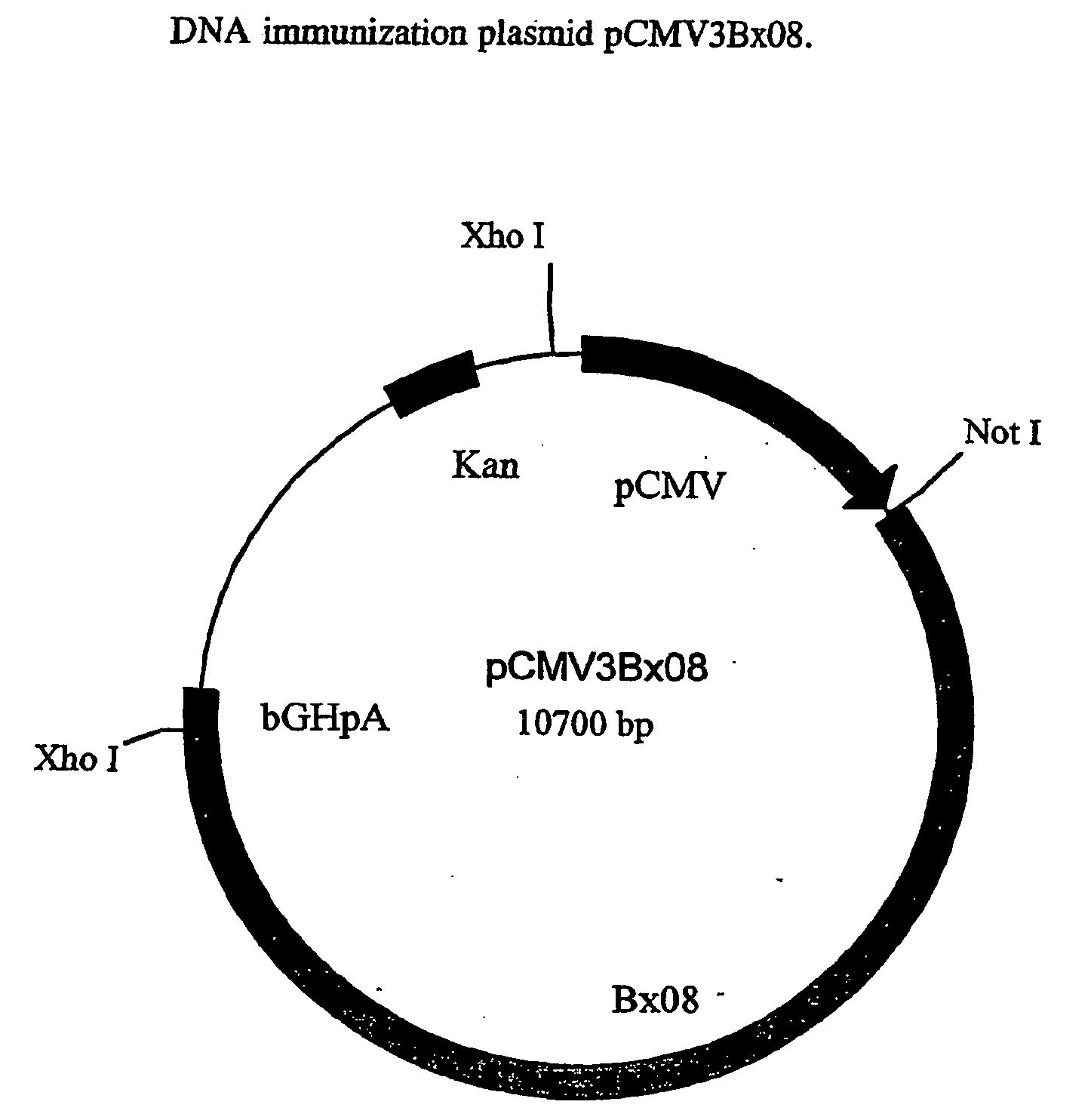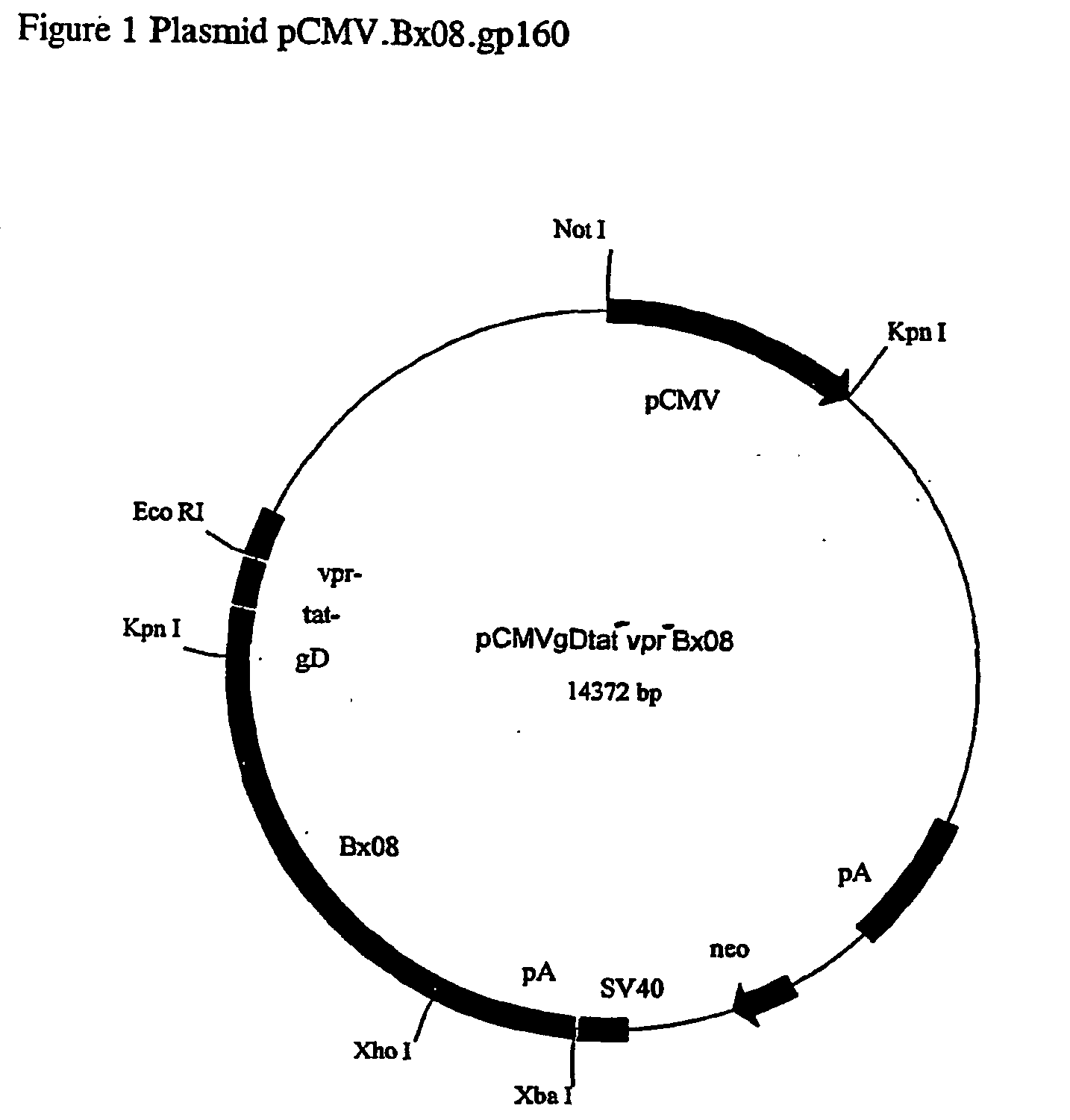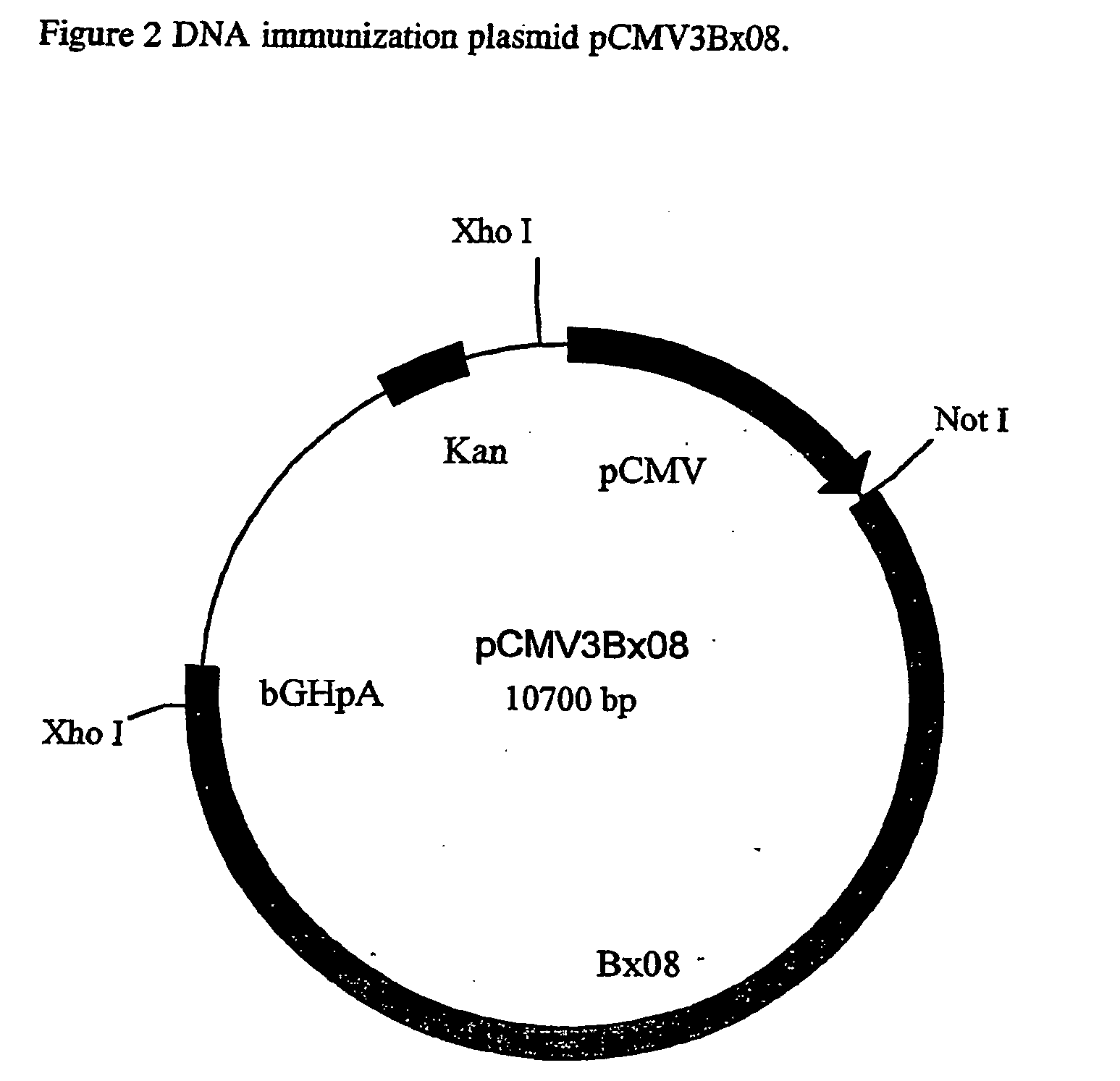Immunizing against hiv infection
a technology for hiv infection and vaccines, applied in the field of hiv infection vaccines, can solve the problems of inability to most known specificities of anti-hiv antibodies, extraordinary ability of virus to mutate, and hampered efforts to develop such a vaccine, so as to reduce the level of detectable p24 and enhance the level of neutralizing antibodies
- Summary
- Abstract
- Description
- Claims
- Application Information
AI Technical Summary
Benefits of technology
Problems solved by technology
Method used
Image
Examples
example 1
[0050] This Example describes the construction of plasmid pCMV3BX08.
[0051] The plasmid, pCMV3BX08, contains sequence segments from various sources and the elements of construction are depicted in FIG. 2.
[0052] The prokaryotic vector pBluescript SK (Stratagene) is the backbone of the plasmid pCMV3.BX08 and was modified by the replacement of the Amp.sup.R with Kan.sup.R gene and the deletion of the fl and the LacZ region. To achieve the desired modifications, the sequence between Ahd1 (nucleotide 2,041) and Sac1 (nucleotide 759) of pBluescript SK, which contains the Amp.sup.R, fl origin and the LacZ, was deleted. A 1.2 kb Pst1 fragment from the plasmid pUC-4K (Pharmacia) containing the Kan.sup.R gene, was blunt end ligated to the Ahd1 site of pBluescript SK in a counter-clockwise orientation relative to it's transcription. A 1.6 kb Ssp1 / Pst1 DNA fragment containing the human cytomegalovirus immediate-early gene promotor, enhancer and intron A sequences (CMV) was ligated to the other e...
example 2
[0057] This Example describes the construction of plasmid p133B1.
[0058] A Bx08 plasmid expression vector (p133B1, FIG. 3) used to transfect the mammalian cells was engineered in several stages using pUC18 as the initial host plasmid. First, an 8.3-kbp fragment of HIV-1.sub.LAI provirus encoding the gag, pol and env proteins was isolated. This fragment lacked the transcription regulatory elements and long terminal repeat elements from each end of the proviral genome to ensure the virus-like particles would be replication-incompetent. This fragment was linked to an inducible human type IIA metallothionein (MTIIA) promoter (Ref 13) and also to a Simian Virus 40 polyadenylation (polyA) addition / transcription termination sequence from plasmid pSV2dhfr (Ref 14). The modified fragment was then inserted into the pUC18 host vector. The resulting deposites expression construct, named pMT-HIV, was used to transfect into African green monkey kidney (Vero) and COS monkey kidney cells. The proced...
example 3
[0065] This Example describes the production of HIV-like particles.
[0066] African green monkey kidney (Vero) cells were recovered and cultivated in Dulbecco's modified Eagle medium (DMEM) containing 10% v / v fetal bovine serum (FBS), referred to below as Complete Medium. At passage 141, the cells were transfected with p133B1 using the calcium phosphate method when at approximately 30% confluence. The cells were shocked with glycerol 8 hours after transfection. For this step, six 10-cm dishes containing approximately 3.0.times.10.sup.6 cells each in 10.0 mL of Complete Medium were prepared. Each dish received 25.0 .mu.g of expression vector and 2.0 .mu.g of plasmid pSV2neo (Ref 17). The pSV2neo contains a selectable marker gene conferring resistance to the antibiotic geneticin (G418). Two days after transfection, the cells from each dish were recovered by trypsinization and replated into twenty-five fresh dishes in Complete Medium supplemented with 0.5 mg / mL of G418.
[0067] In total, 3...
PUM
| Property | Measurement | Unit |
|---|---|---|
| time | aaaaa | aaaaa |
| MN | aaaaa | aaaaa |
| charge | aaaaa | aaaaa |
Abstract
Description
Claims
Application Information
 Login to View More
Login to View More - R&D
- Intellectual Property
- Life Sciences
- Materials
- Tech Scout
- Unparalleled Data Quality
- Higher Quality Content
- 60% Fewer Hallucinations
Browse by: Latest US Patents, China's latest patents, Technical Efficacy Thesaurus, Application Domain, Technology Topic, Popular Technical Reports.
© 2025 PatSnap. All rights reserved.Legal|Privacy policy|Modern Slavery Act Transparency Statement|Sitemap|About US| Contact US: help@patsnap.com



